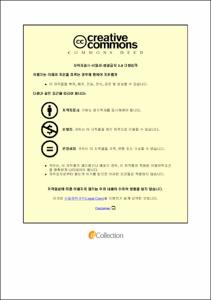관상동맥중재술을 시행하는 동시대의 협심증 또는 심근경색 환자에서 베타 차단제가 예후에 미치는 효과: 국가통계를 이용한 분석
- Abstract
- 배경: 베타-아드레날린 수용체 차단제는 심장에 대한 과도한 아드레날린 활성에 따른 유해한 영향을 감소시키기 위하여 관상 동맥 질환 환자에서 사용되어 왔다. 그러나, 관상동맥 중재술 및 이후의 현대적인 약물치료의 배경하에서 베타차단제의 임상 효과에 대한 증거는 부족하다.
방법: 우리나라의 건강보험심사평가원 자료를 바탕으로 2011년부터 2015년까지 심근경색 (30,404명) 또는 협심증 (48,617명)을 최초 진단받아 경피적 관상동맥 중재시술을 받은 환자를 대상으로 하였다. 성향 점수 매칭 분석을 사용하여 베타 차단제 치료를 받은 환자와 받지 않은 환자에서 사망률을 비교하였다.
결과: 베타 차단제는 협심증 환자 (62.7%)보다 심근경색 환자 (83.4%)에서 더 높은 비율로 사용되었다. 2.1년의 추적 관찰 기간 동안, 전체 환자에서의 사망률은 베타 차단제 사용군에서 사용하지 않은 군에 비해 유의하게 낮았다 (2년 사망률: 베타 차단제 사용군 4.2%, 베타 차단제 비사용군 4.7%; p=0.005). 성향 점수 매칭 분석에서 진단에 따른 예후 차이를 보였는데, 심근경색 코호트에서 베타 차단제 치료군에서 사망의 위험이 유의하게 낮았으며 (위험비: 0.74; 95 % 신뢰 구간 : 0.63-0.86; p <0.001), 혐심증 코호트에서는 차이를 보이지 않았다 (위험비: 1.04; 95 % 신뢰구간: 0.94–1.15; p=0.44). 베타 차단제와 관련된 생존증가 효과는 심근경색 사건 후 1년 이내에 가장 컸다.
결론: 관상동맥 중재술 및 현대적인 시술 후 약물치료를 받은 선택되지 않은 관상동맥질환 환자에서 베타 차단제 치료는 심근경색 환자에서 사망률의 유의한 감소와 관련이 있었지만 협심증 환자에서는 그렇지 않았다.|Background: Beta-adrenergic receptor blockers are used in patients with coronary artery disease (CAD) to reduce the deleterious effects of excessive adrenergic activation on the heart. However, there is limited evidence regarding the benefit of beta-blockers in the context of contemporary management following percutaneous coronary intervention (PCI).
Methods: The nationwide South Korea National Health Insurance database was used to identify 79,021 patients with a diagnosis of either acute myocardial infarction (AMI; n = 30,404) or angina pectoris (n = 48,617) who underwent PCI between 2011 and 2015, and survived to be discharged from hospital. The risk of all-cause mortality in patients treated with a beta-blocker was compared with those who did not receive beta-blocker therapy using a propensity-score matching analysis.
Results: Beta-blockers were used in a higher proportion of patients with AMI (83.4%) than those with angina pectoris (62.7%). Over a median follow-up of 2.1 years (interquartile range, 1.2–3.2 years), the risk of death was comparable between the two groups in the overall population (hazard ratio [HR]: 0.98; 95% confidence interval [CI]: 0.90–1.06; p = 0.58). However, the mortality risk was significantly lower in patients treated with a beta-blocker in the AMI group (HR: 0.74; 95% CI: 0.63–0.86; p < 0.001). In the angina group, the mortality risk was comparable regardless of beta-blocker use (HR: 1.04; 95% CI: 0.94–1.15; p = 0.44). The survival benefit associated with beta-blocker therapy was most significant in the first year after the AMI event.
Conclusions: In unselected CAD patients who underwent contemporary post-PCI management, beta-blocker treatment was associated with a significant reduction in mortality in patients with AMI but not in those with angina.
- Issued Date
- 2020
- Awarded Date
- 2020-02
- Type
- Dissertation
- Alternative Author(s)
- Pil Hyung Lee
- Affiliation
- 울산대학교
- Department
- 일반대학원 의학과
- Advisor
- 이승환
- Degree
- Doctor
- Publisher
- 울산대학교 일반대학원 의학과
- Language
- eng
- Rights
- 울산대학교 논문은 저작권에 의해 보호받습니다.
- Appears in Collections:
- Medicine > 2. Theses (Ph.D)
- 파일 목록
-
-
Download
 200000285292.pdf
기타 데이터 / 657.8 kB / Adobe PDF
200000285292.pdf
기타 데이터 / 657.8 kB / Adobe PDF
-
Items in Repository are protected by copyright, with all rights reserved, unless otherwise indicated.